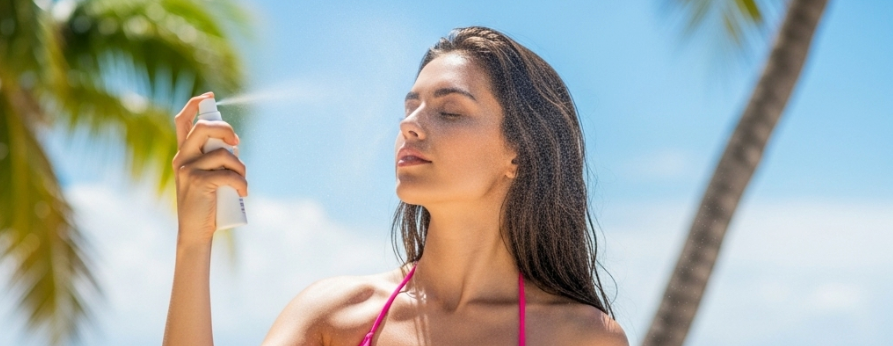K‑Beauty Startups Plan U.S. Expansion Despite Tariffs
How Korean beauty brands like Tirtir, d’Alba, and Beauty of Joseon are pushing into Ulta, Sephora, and Costco despite rising tariffs.
23 Jun'25
By Yugadya Dubey


K‑Beauty Startups Plan U.S. Expansion Despite Tariffs
The U.S.’s planned 25% tariff on Korean cosmetics sounds like a deal-breaker—until you stumble on a viral cushion-foundation Reel that’s already sold out in stores.
That’s the paradox facing brands like Tirtir, d’Alba, Torriden, and Beauty of Joseon—they’re moving into Sephora, Ulta, Target, Costco, and speaking directly to Gen Z buyers.
Despite import tariffs, their tech-driven formulas, viral social campaigns, and flexible margins keep the momentum alive.
So, how are they overcoming tariff headwinds—and how do visuals play a role? Let’s unpack this.
K‑Beauty’s U.S. Love Affair
U.S. e-commerce is already K‑Beauty's stronghold—over 80% of South Korea’s $13 billion cosmetics are export-driven.
In fact, Korea toppled Germany to become America’s third-largest beauty exporter in 2024. Higher e-commerce penetration, social-first targeting, and affordable quality make U.S. consumers click “buy” despite tariffs.
Tariffs, calculated at ~10% now and expected to rise to 25% this July, are seen as a hurdle, but not a barrier
Why Startups Believe Tariffs Won’t Sink Them
- Gross margin flexibility: Many outsource to low-cost manufacturers like Cosmax and Kolmar, helping absorb tariffs.
- Global K‑Culture wave: Think BTS, K‑drama, viral skincare rituals—these set the stage for makeup sales.
- Digital virality beats cost: A viral TikTok demo can sell out shelf stock before tariffs even impact pricing.
- Retail deals in sight: Talks with Ulta, Sephora, Target, Costco show confidence in physical U.S. presence.
The Challenge for Visual Identity
Expanding into U.S. retail means adjusting messaging, while keeping brand authenticity:
- Localize visuals: What looks chic in Seoul may need warmer vibes in L.A.
- Blend culture & commerce: High‑tech K‑Beauty with shelf storytelling that appeals globally.
- Be tariff-transparent: Smart overlays (“Premium Made in Korea + 10% Duty”) build trust.
Admigos At Work: A Visual Playbook
a) Macro-Texture Reels
Highlight viral products—like cushion foundations for deeper skin tones—zooming in to show richness and tone shift in slow‑mo. Overlay: “30% pigment, 100% blend.”
b) Before/After Tariff Frames
Split-screen: left – online price + mood-lit shot; right – shelf-ready packaging with callout: “In-store now, price includes duties.”
c) Retail Launch Teasers
Store walkthrough clips with branded GIFs like “@Ulta” and cart-tracked CTAs—integrating digital buzz into physical retail excitement.
d) Culture-Informed Content
Collaborate with diaspora influencers: snippets of them explaining tar, captured in city landmarks. Overlay: “K‑Beauty, Local Love.”
A Snapshot Campaign: The “Duty? No Worry” Reel
- Frame 1: Macro cushion puff bounce + price tag
- Frame 2: Swipe reveal of blend across deeper complexion
- Frame 3: Tariff overlay fades into “Now at Ulta” logo
- Frame 4: Customer picks product off shelf—“Scan & Glow” sticker
- Frame 5: CTA – “Check your nearest shelf”
This mix of textures, transparency, and retail realness garners saves, shares, and retail footfalls.
Going Further: Retail Meets Content
In the U.S., retailtainment rules. Brands must do more than occupy shelf space—they need story-led kiosks, demo stations, and participatory moments. Admigos supports with pre-launch content hubs, interactive banner ads, and social-first content series to bridge the screen and in-store.
Final Thoughts
Tariffs may sting—but they’re no match for virality, authenticity, and smart positioning. K‑Beauty startups are leaning into digital-first momentum to carve out retail space, with or without trade headlines.
But scaling across markets means mastering visuals that adapt, not just translate. Admigos helps brands localise their digital-first, texture-rich storytelling to match every city’s pace and vibe—so your product looks premium and feels familiar, whether it’s in an L.A. Ulta or your palm back home.
— By Yugadya Dubey
Ultra Violette’s SPF Mist: Over Makeup Protection
Ultra Violette’s SPF spray shows where sun care is heading and how beauty meets convenience.

Karan Johar and Oxylife: Turning Celebrity into a Salon Experience
Oxylife’s Karan Johar ad isn’t just funny, it’s a masterclass in celebrity-first, brand-aligned salon marketing.
